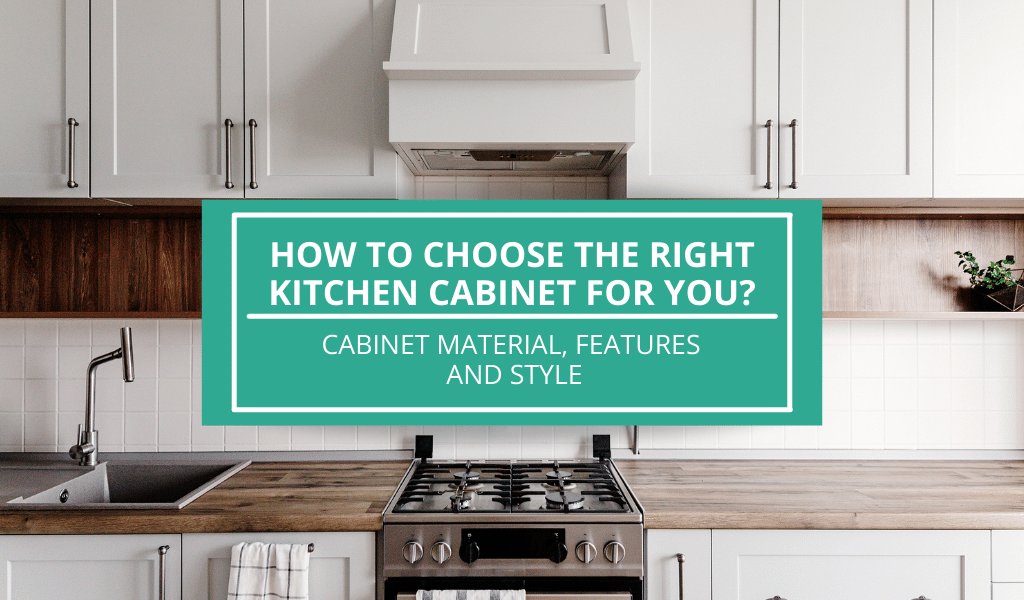A conventional 10x10 foot kitchen cabinet averages from $4,000 to $13,000. The cost can get significantly higher or lower depending on the size and materials used. Manufacturing-based options such as purchasing ready-made or customized cabinets, can also weigh on the cost.
Indeed, finding one that suits your budget is imperative but it is not the end-all. Appraising other elements such as the measurements, materials used and cabinet features are very much essential to a functional kitchen space.
To help get you started, we’ve narrowed down the basics and crucial considerations for you to materialize the kitchen cabinet of your dreams.
Kitchen Cabinet Options
The following options are based on how the kitchen cabinets are manufactured and sold. Each option has its respective pros and cons. Whether you’ll be opting for stock, semi-custom, or custom, will influence the succeeding decisions you’ll have to make about your kitchen cabinet.
Stock
These are the kitchen cabinets sold at home centers near you. Stock cabinets are often pre-assembled and ready for installation.
Because stock kitchen cabinets are mass-produced they are typically the most affordable option. The cost runs between $100 and $300 per linear foot, or between $200 to $650+ per unit. The material used for the cabinets also contributes to the bargain.
$200 to $650+
per unit
Usually, manufacturers use cheaper materials such as particle board, MDF or plywood as the main materials for the cabinets. Thus, the durability and longevity of the cabinets will depend on the materials used and production costs.
Stock cabinets are manufactured using standard measurements and designs. This gives the consumers limited options for style, features and finishes, which can be a dilemma if you have odd kitchen measurements.
Semi-custom
Semi-custom cabinets are basically stock cabinets but customizable to a certain extent. For instance, the cabinet dimensions can be changed as per your kitchen’s measurements. This option also provides for a variety of materials, finishes and style selections. These are built to order and generally take four to eight weeks to get delivered.
Because of the above mentioned perks, semi-custom cabinets cost a bit more than the stock options. The cost of semi-custom cabinets ranges from $150 to $650 per linear foot, or from $250 to $800+ per unit.
$250 to $800+
per unit
Along with the freedom to customize the cabinets to your liking, you can be assured that the quality of materials used will agree with your standards. If you think that semi-custom kitchen cabinets are for you, get a free quote from trustworthy local contractors near you.
Custom
With custom kitchen cabinets, consumers have complete control over the dimensions, material, style, finishes and everything else that concerns the making of a kitchen cabinet. Consumers can as well decide on adding accessories and features that the ready-made options do not typically provide.
Because of the planning, production and craftsmanship that goes into this kitchen cabinet option, the cost can range from $500 to $1,200 per linear foot, or cost $500 and above per unit.
$500 and above
per unit
Nonetheless, this option is best for homeowners who are particular about their vision and those who want to have some creative fun with their kitchen cabinets. If you think this option is best for you, you can get a free estimate of your custom kitchen cabinet from trustworthy local contractors near you.
Cabinet Style: American vs European
American Style
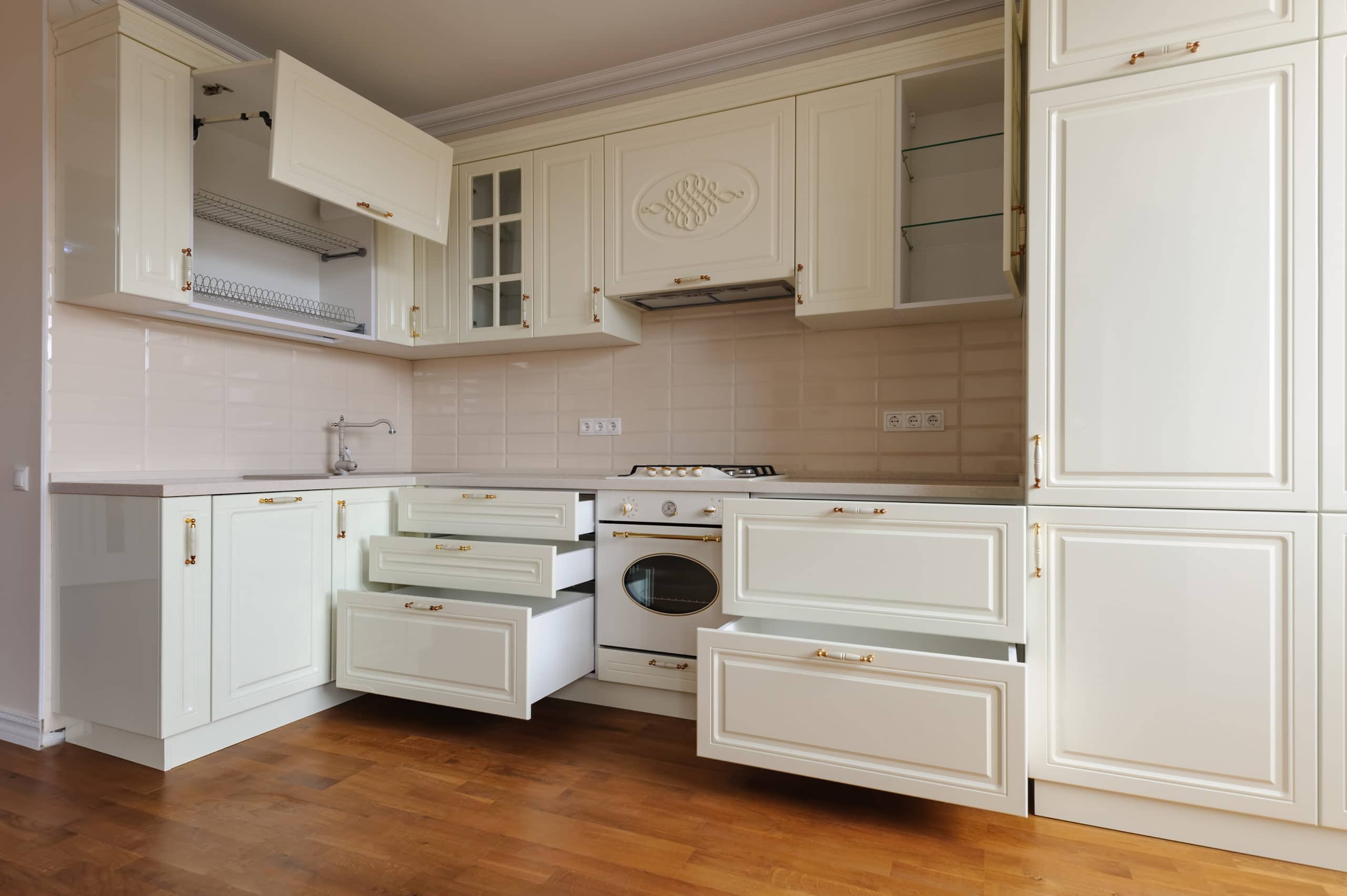
The defining characteristics of the American Style are its frames and its open shelving. These cabinets are known to have the classic look as the overall features of these cabinets are made up of traditional designs. They have more depth and visual appeal, but they can also look a bit busier.
This cabinet style is used in traditional to modern kitchens. Contemporary kitchen designs usually skip American style cabinets in favor of something a bit more minimal
European Style
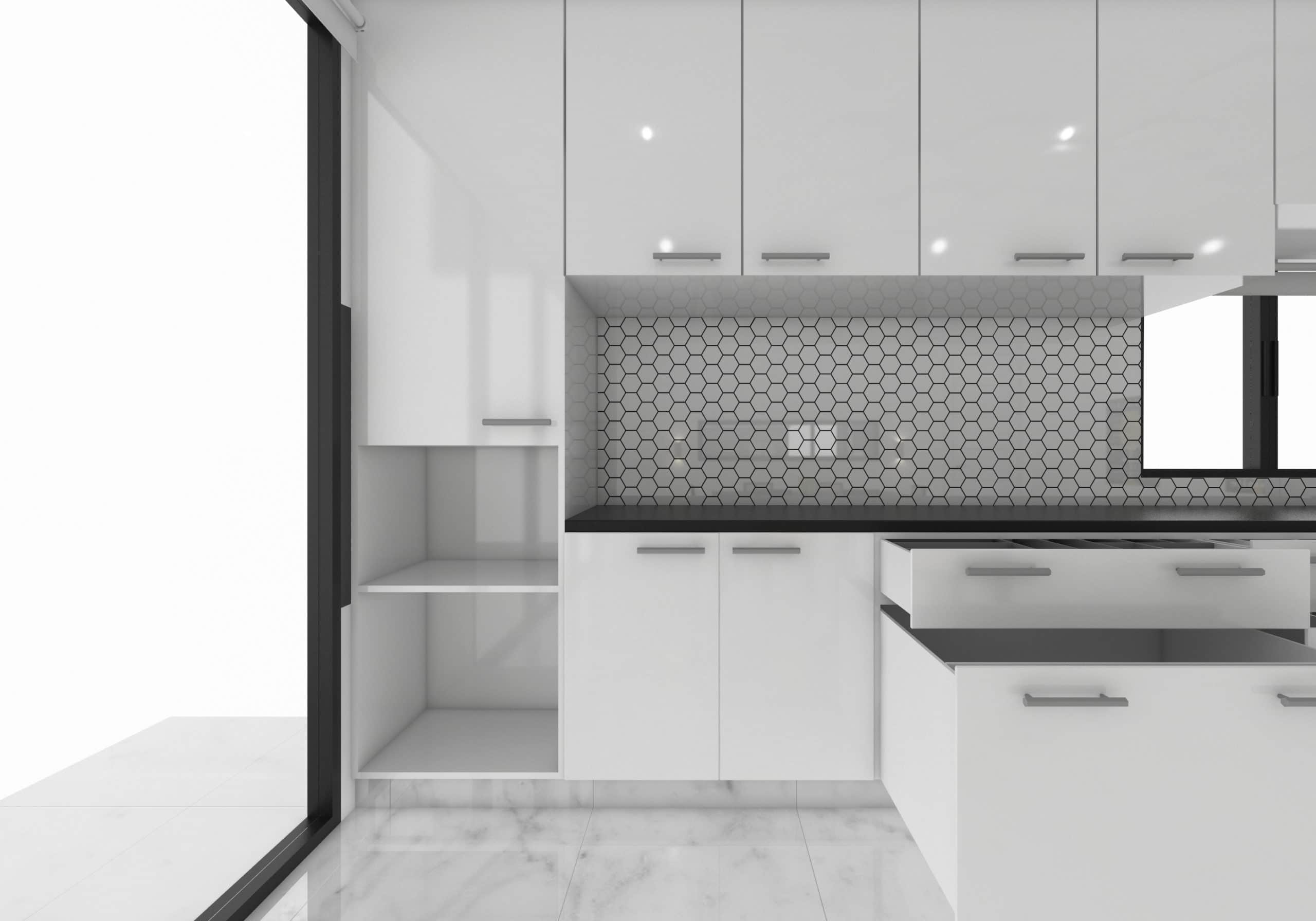
Cabinets of this style may appear more modern, with less detail and depth. European kitchen cabinets are frameless and with no to little hardware, giving it a very simple and clean look. Because of its minimalist approach, contemporary kitchens go for this style of cabinet.
American Style | European Style |
|---|---|
Traditional to Modern | Modern to Contemporary |
Solid Wood Doors | MDF Doors |
1/2" or 5/8" Thick Plywood Box | 3/4" Plywood Box |
Traditional Drawer Design | Tandem Drawer Box |
No Additional Measurements | Additional Clearance Measurements |
Choosing Cabinet Material
Hard Wood
This is a timeless choice for cabinet materials. They are always in style and a material that is highly sought after. Hard wood is provided by different tree species.
Wood cabinets cost can get pretty high and can easily reach up to $5000. Though this material is costly it’s still worth it because wood is very durable, timeless, and highly customizable.
Pros
Cons
Plywood
Composed of laminated layers of thin wood. This material is best for cabinet sides, backs, shelves, and drawer bottoms. This is also a popular choice for kitchen cabinets for a number of reasons.
Plywood costs way less than solid wood. It is a very durable material that can withstand many kinds of damage including water damage. It is an excellent choice if you’re planning to build a kitchen cabinet that must carry a large amount of weight.
Pros
Cons
Particle Board
Also known as Low-density Fiberboard (LDF), particle board is made up of recycled wood products ( made up of wood chips or shavings) fused using glue into panels. Usually sealed in with laminate or wood veneer to make it more pleasing to the eyes.
Pros
Cons
Medium Density Fiberboard (MDF)
is a composite material that is made from recycled fibers, resin, and wax, all of which are pressed together. They are thought to be a quality choice between plywood and particleboard.
MDF cabinets’ price ranges $100 to $280 per linear square foot, the thicker the fiberboard the higher the price. The materials and production of MDF makes it heavier than wood but it also has a smooth surface which is ideal for painted cabinets.
Pros
Cons
Wood Veneer
Composed of thin layers of solid hardwood glued to less expensive core material, thus has some of the advantages of a regular hardwood. This material is most often used for cabinet doors.
Wood Veneer cabinets can cost between $4000 to $9000. Veneers can be stained and refinished to any color.
Pros
Cons
Cabinet Features and Other Considerations
Cabinet Dimensions
Before considering the style, features and finishes, one must get the dimensions right. This is key to a functional kitchen cabinet. The following are guides to standard cabinet dimensions, as provided by:
BASE CABINETS
Are the most essential as they serve as the base for the countertops. Since they support heavyweight materials, these need to be sturdy and well-constructed. For this reason, they can be the most expensive cabinets of the bunch.
Moreover, these cabinets serve as storage for larger kitchen wares or itemsthat you don’t usually use on the daily.
| |||
|---|---|---|---|
Height | 35 to 36 inches | ||
Width | 9 to 46 inches | ||
Depth | 24 inches | ||
WALL CABINETS
Also known as upper cabinets or wall-mounted cabinets are important to your kitchen’s remodeling as they set the tone for its visual appeal (because they are positioned at eye-level). Having so, there are lots of options to make these cabinets more fun, you can personalize these by adding lighting and other features.
They usually are the most functional/used cabinets as they are used for food storage and lightweight kitchen wares used on the daily.
| |||
|---|---|---|---|
Height | 12 to 42 inches | ||
Width | 9 to 36 inches | ||
Depth | 12 inches | ||
TALL CABINETS
Also known as Pantry Cabinets, extends from the floor to the ceiling. Because of this full height feature, these cabinets guarantee maximum storage capacity. Generally they store pantries but can serve as broom storage as well.
| |||
|---|---|---|---|
Height | 84, 90, and 96 inches | ||
Width | 18, 24, and 30 inches | ||
Depth | 24 inches | ||
Self-Close vs Soft-Close Mechanism
Self-Close Mechanism
This feature makes it easier for cabinet doors to close. Even with a very little force, the self-close hinges will pull the door into the cabinet frames. This makes it easier to navigate your busy kitchen space.
Soft-Close Mechanism
This feature prevents kitchen cabinet damage by halting doors from crashing against cabinet frames. Soft-close hinges pause the door at about 2” away from closing and then slow itself to rest softly against the cabinet frame. Even if the door is closed forcefully, the soft-close hinges will absorb the force and will close it gently.
Kitchen Cabinet Styles
Rustic Country-Style
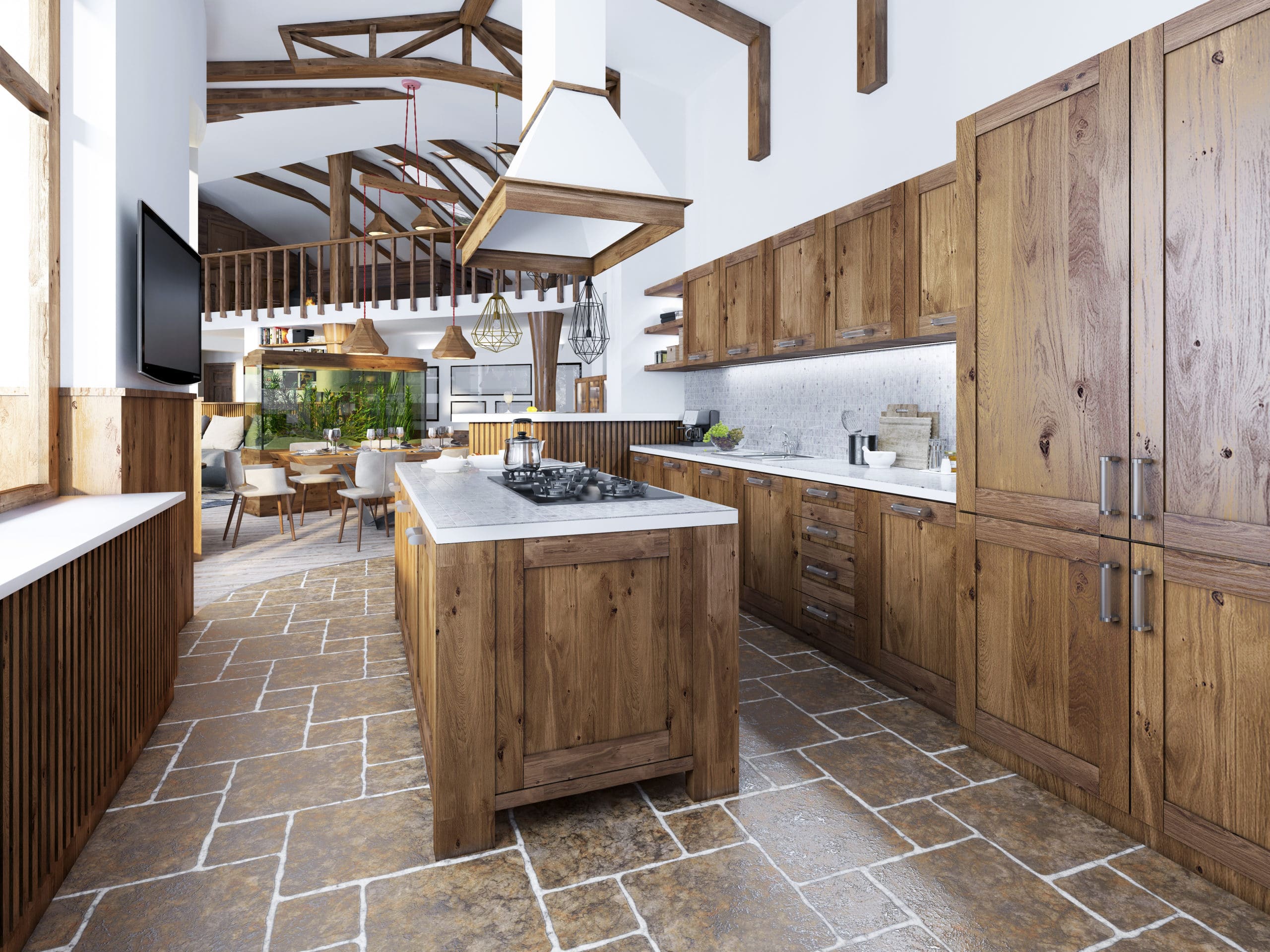
This style of kitchen cabinet gives emphasis on the woods and its raw qualities. It gives the look of mountain cabins and authentic rural farmhouses. Rustic style is a classic that brings a casual and inviting feel to any home.
Slab or Flat Panel
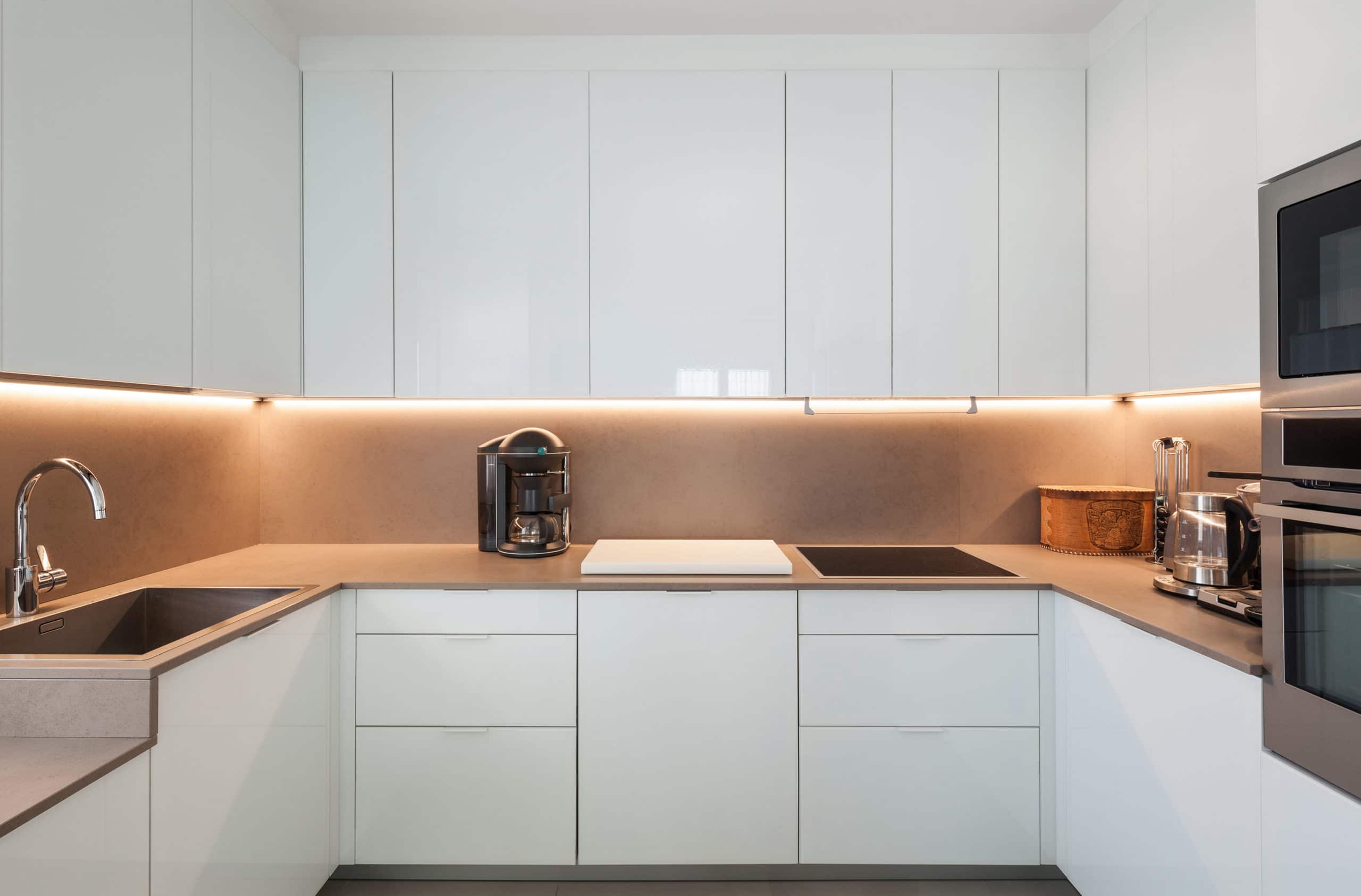
This is today’s most accessible cabinet choice. It is very easy to clean and very simple. This cabinet style is a very straightforward design. There is no framing or beadboard which are traditional in other cabinet styles.
Louvered
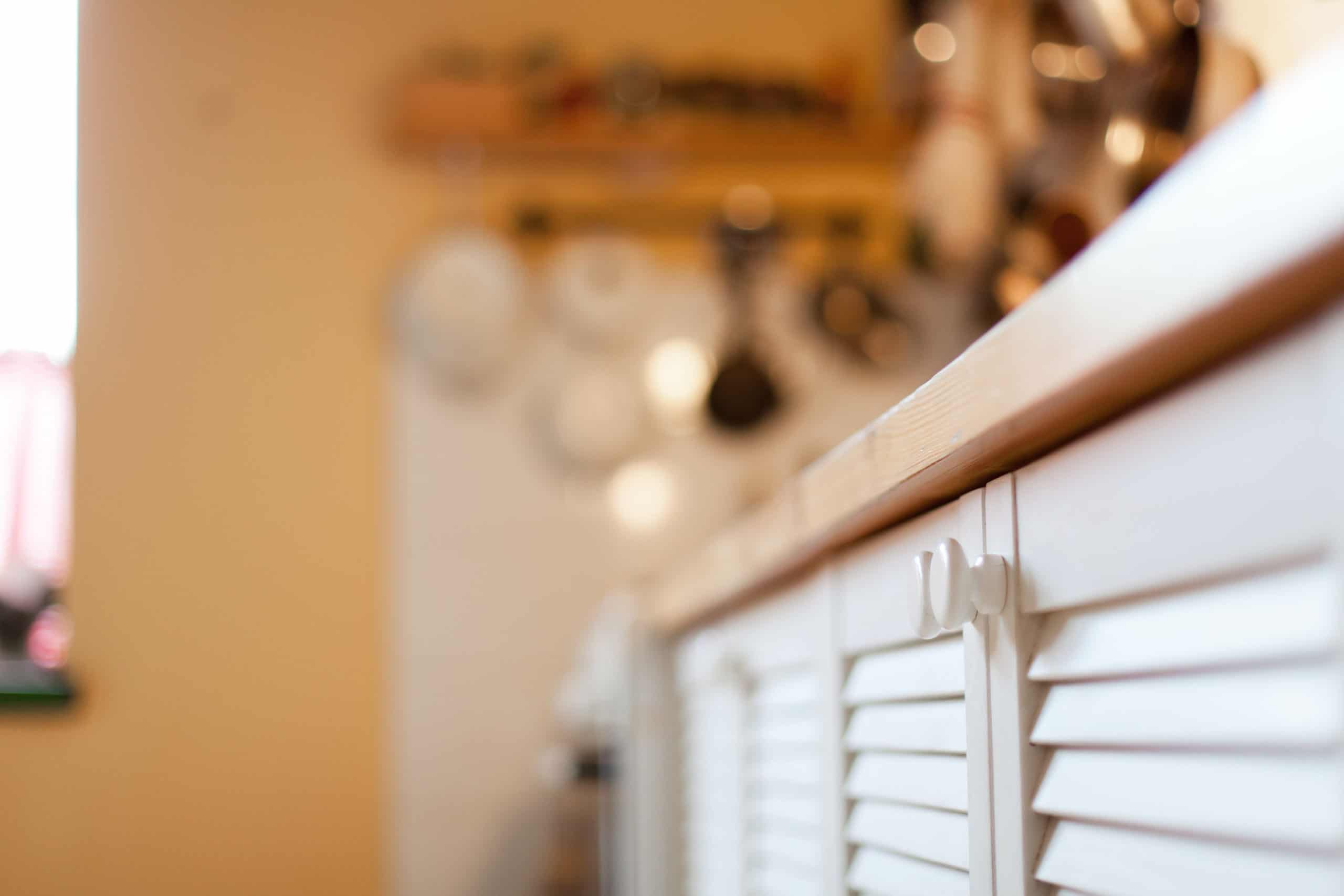
This style has a very modern design, it is made with horizontal wood slats to provide texture. Those horizontal wood slats allow light to pass through and it also gives ventilation which can be very helpful depending on what you’re storing.
Frequently Asked Questions
Can I install my cabinets by myself?
For small projects, you can do it by yourself to save up on the cost. However, in bigger projects it will be much better to hire contractors because the installation process will definitely require a more advanced skillset. Knowing the risks of doing it by yourself and hiring a contractor may save you a lot of money in the long run.
How do I take care of my cabinets?
Basic cleaning is the very first thing you should consider to preserve your kitchen cabinets. A simple mixture of soap and water would do, just make sure to wipe all the moisture to avoid water damage. Drying up spills properly with a dry towel can also be a big factor in maintaining your cabinets.
Which material is the best to use for cabinets?
The most durable material for cabinets is wood. Its price may be higher than other materials but it is guaranteed to last longer than other materials. Some types of wood can even resist scratching and denting, which tells us about its overall quality.
How long will it take to install kitchen cabinets?
This will depend on the type of cabinetry that you’ll be purchasing. If you’re opting for stock cabinets, installation will normally take up to 2 to 3 days but can be done in a day,.
If you’re planning for semi-custom cabinets, you have to factor in the customization and delivery of your cabinets which can take up to 4 to 8 weeks.
Lastly, If you’re having custom cabinets, this will ultimately depend on the agreed upon timeline that you talked about with your chosen contractor.
What is my warranty on my kitchen?
You should make sure that your contractor will offer at least 1 year of warranty and if it will include all the other accessories installed with the kitchen cabinets.
Do you check the moisture of the wood before using it?
Moisture is a very big factor for the durability of the woods in the long run. Making sure that there is no excess moisture in the materials that will be used will be a big help to make sure that your cabinets will avoid warping and will last longer.
For custom cabinets, will it be made off-site or at home?
Custom cabinets’ components are initially made at the company/ contractor’s facility. However, there may be instances that adjustments and other configurations will be done at home during the installation process.
How are the cabinets being assembled?
There are many ways of assembling cabinets, one of them is stapling cabinets but this is not a very efficient method because the cabinets may fall apart quickly. If you want your cabinet to be durable and last longer, gluing and pocket screwing is the best option.
How much is the labor cost for installing kitchen cabinets?
Labor costs range from $50 to $250 per linear foot. But depending on the contractor that you hired, labor costs may be computed according to hourly or daily rates. This will also vary depending on the type of kitchen cabinet that you plan on having installed.

